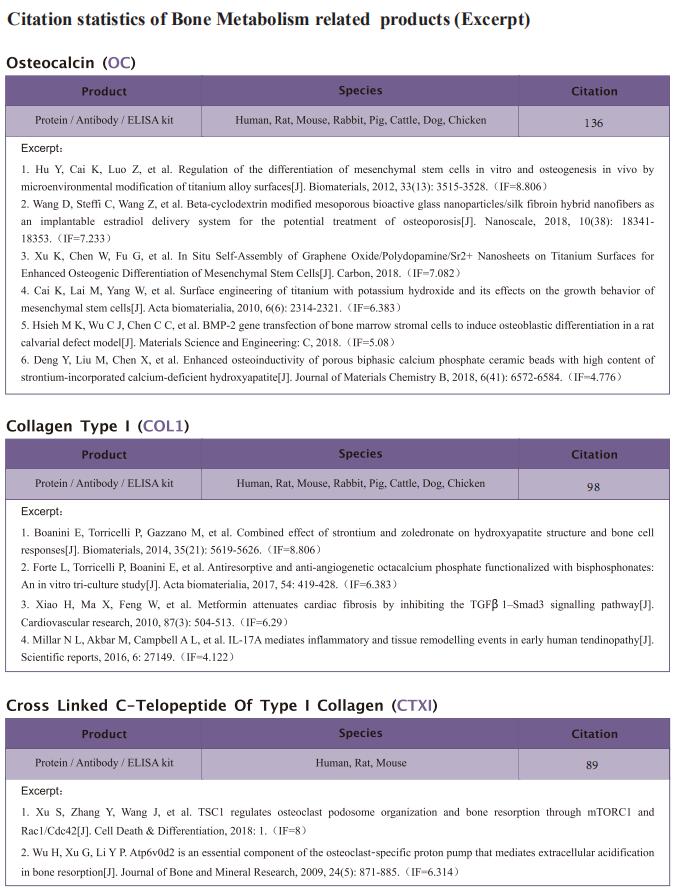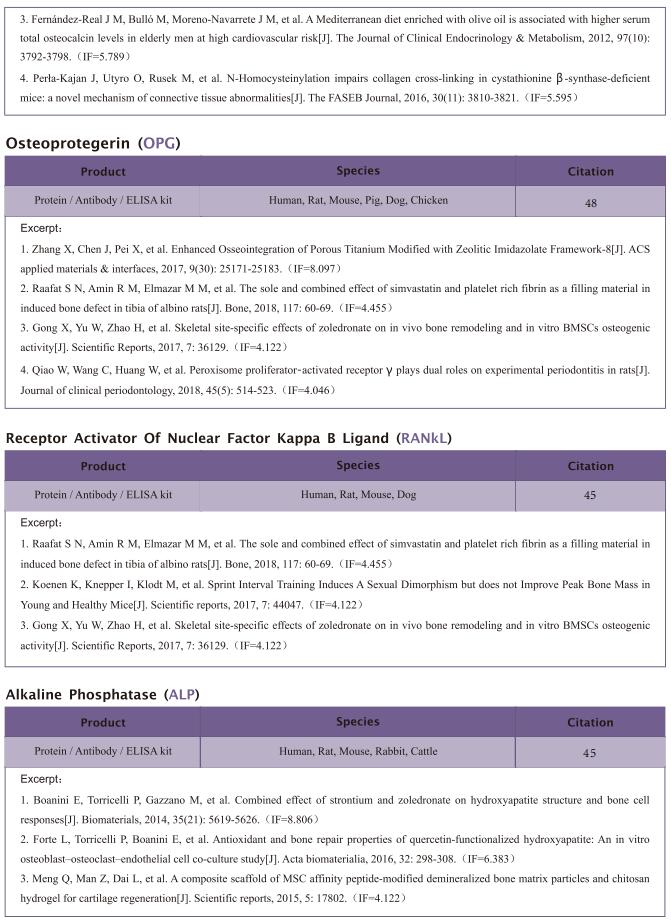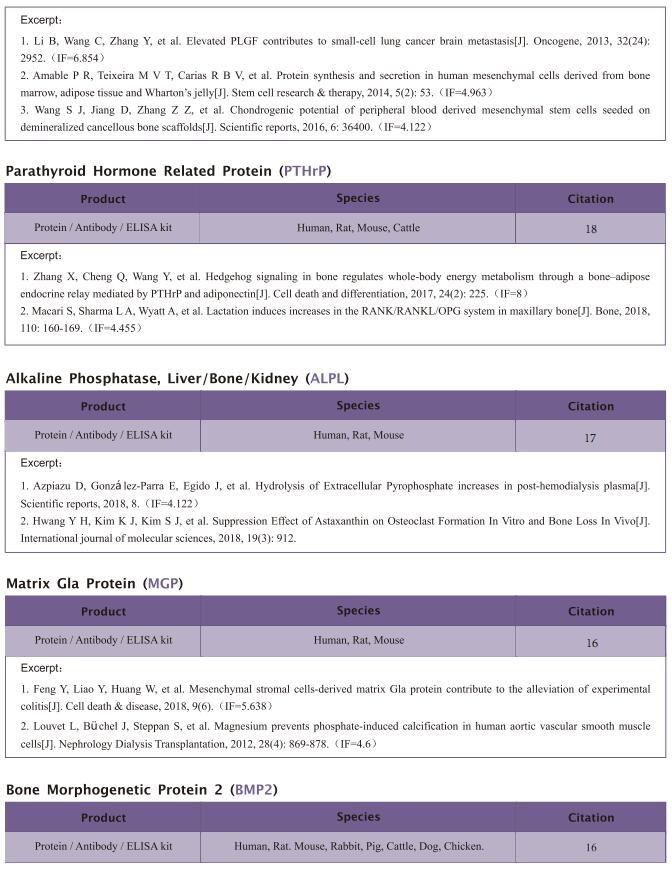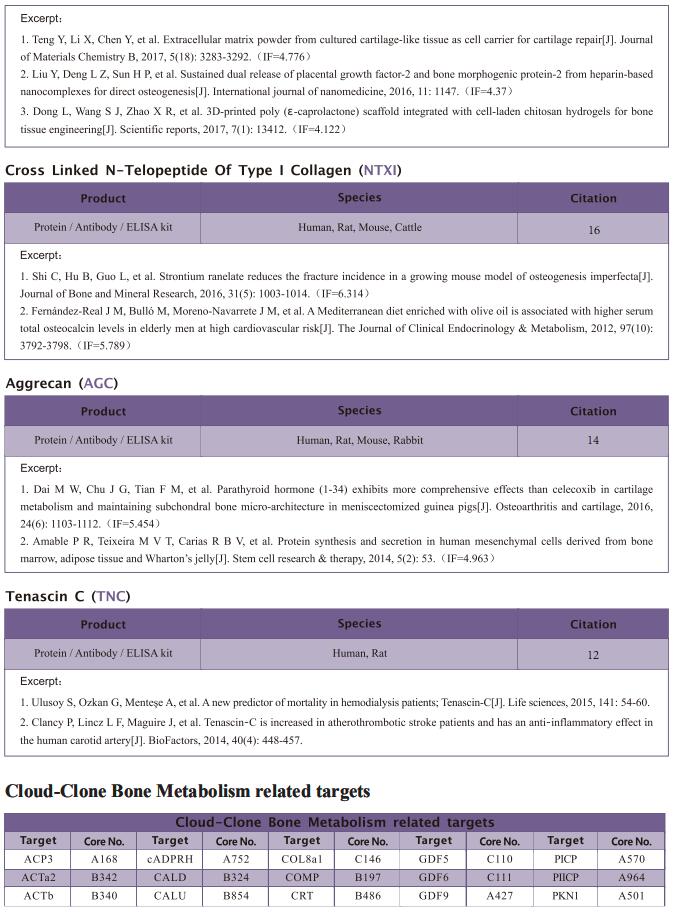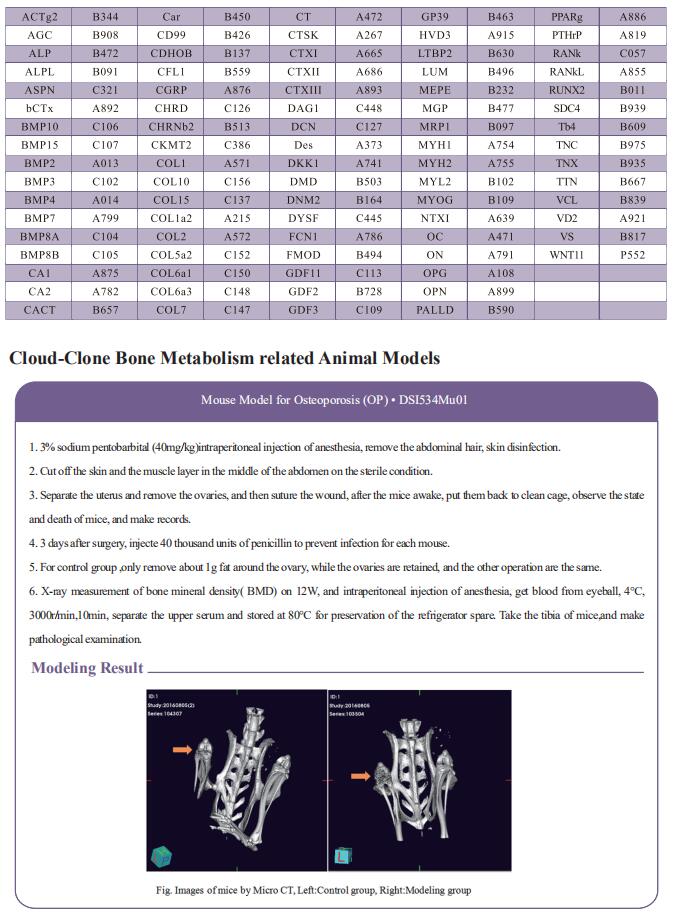OTUB1 promotes osteoblastic bone formation through stabilizing FGFR2

On April 7, 2023, Lingqiang Zhang's team, State Key Laboratory of Proteomics, National Center for Protein Sciences (Beijing), Beijing Institute of Lifeomics, China, and Cui Hua Liu's team, CAS Key Laboratory of Pathogenic Microbiology and Immunology, Institute of Microbiology, Chinese Academy of Sciences, China, published a paper titled “OTUB1 promotes osteoblastic bone formation through stabilizing FGFR2” in Signal Transduction and Targeted Therapy. Their results suggested that OTUB1 positively regulates osteogenic differentiation and mineralization in bone homeostasis by controlling FGFR2 stability.

The kits [ELISA Kit for Cross Linked C-Telopeptide Of Type I Collagen (CTXI), CEA665Mu; ELISA Kit for Procollagen I N-Terminal Propeptide (PINP), CEA957Mu] of Cloud-Clone brand was chosed in this article, we are so proud for supporting the reaserchers.


Bone homeostasis is maintained by the balance between osteoblastic bone formation and osteoclastic bone resorption. Dysregulation of this process leads to multiple diseases, including osteoporosis. However, the underlying molecular mechanisms are not fully understood. Here, we show that the global and conditional osteoblast knockout of a deubiquitinase Otub1 result in low bone mass and poor bone strength due to defects in osteogenic differentiation and mineralization. Mechanistically, the stability of FGFR2, a crucial regulator of osteogenesis, is maintained by OTUB1. OTUB1 attenuates the E3 ligase SMURF1-mediated FGFR2 ubiquitination by inhibiting SMURF1’s E2 binding. In the absence of OTUB1, FGFR2 is ubiquitinated excessively by SMURF1, followed by lysosomal degradation. Consistently, adeno-associated virus serotype 9 (AAV9)-delivered FGFR2 in knee joints rescued the bone mass loss in osteoblast-specific Otub1-deleted mice. Moreover, Otub1 mRNA level was significantly downregulated in bones from osteoporotic mice, and restoring OTUB1 levels through an AAV9-delivered system in ovariectomy-induced osteoporotic mice attenuated osteopenia. Taken together, our results suggest that OTUB1 positively regulates osteogenic differentiation and mineralization in bone homeostasis by controlling FGFR2 stability, which provides an optical therapeutic strategy to alleviate osteoporosis.
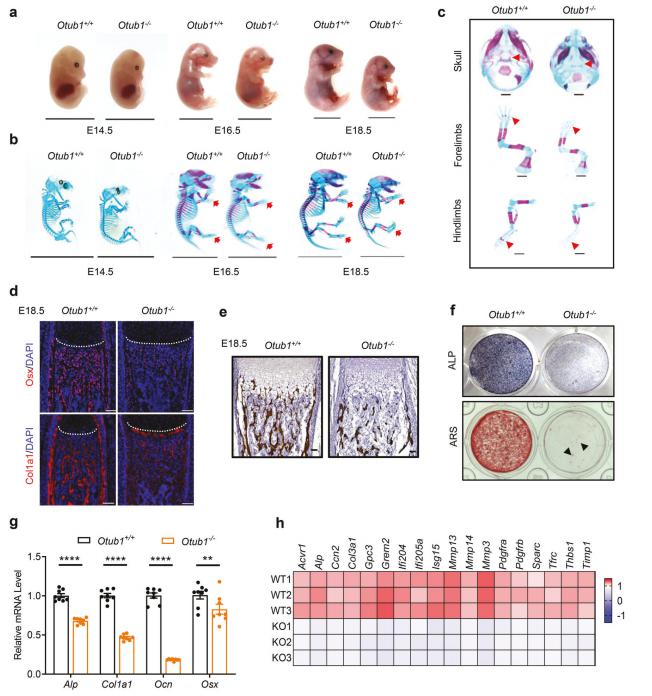
Fig.1 OTUB1 deficiency causes defects in osteogenesis

Fig.2 OTUB1 cooperates with SMURF1 to regulate the ubiquitination and stability of FGFR2
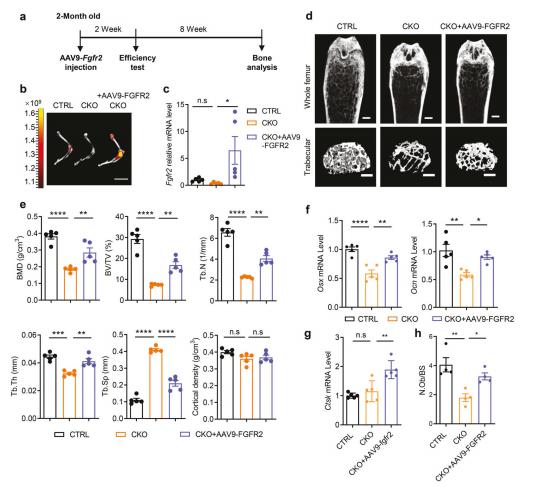
Fig.3 FGFR2 rescues OTUB1 deletion-caused bone mass loss and osteogenesis defects

Fig.4 OTUB1 overexpression alleviates osteoporosis in OVX mice
